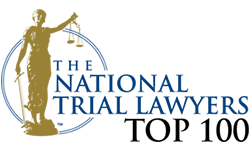Lung cancer is the leading cause of cancer death in the nation. So if your doctor tells you that you have a lesion on your lung, it’s natural to be worried.
But what exactly is a lesion on the lung? And does it always mean cancer?
A lesion on the lung may also be referred to as a:
- Lung nodule
- Pulmonary nodule
- Pulmonary lesion
- Solitary pulmonary nodule (SPN)
- Lung spot
- White spot on the lung
- Coin lesion
- Lung shadow
All of these names refer to an abnormal growth on the lung. A lesion or nodule is typically a small opaque spot less than three centimeters in diameter but can range between one and five centimeters. Nodules may develop in one or both lungs. They can be formed by:
- Infection or inflammation
- Air pollutants
- Autoimmune diseases
- Fungal infections
- Respiratory infections
- Scar tissue
- Exposure to carcinogens
- Cancerous or non-cancerous cell growth
What Percentage of Lung Nodules Are Cancerous?
Only about 3 or 4 out of every 100 detected lung nodules are cancerous. That means that if a doctor notices a lesion on your lung on a medical imaging test, there is less than a 5% chance it will be cancerous.
Pulmonary nodules are actually rather common and rarely indicate cancerous growth. However, it is important to monitor these abnormalities to rule out any possibility that they are malignant (cancerous).
How Is a Lesion on the Lung Detected?
A pulmonary nodule is usually first detected on the results of medical imaging like X-rays or computed tomography (CT) scans.
Lesions are sometimes found when a patient complains of lung-related symptoms. But it’s also common for a physician to see a lung lesion on a chest X-ray or CT scan when they are looking for something else. This is called an incidental finding—an accidental discovery of something unrelated to why the doctor orders the tests. About half of adults who get chest X-rays or CT scans find that they have one or more lesions on their lung(s). If your lung nodule was an incidental finding, the chances that the lesion indicates cancer are low.
What Happens if My Doctor Finds a Lesion on My Lung?
If a lesion is noticed on your lung, your doctor will recommend continual monitoring at intervals, usually for a period of about two years. If no change is observed over a two-year period, it is generally safe to say that the lesion is most likely benign (non-cancerous).
If your physician notes a change in size during the period of monitoring, however, they will recommend further action. This usually means a biopsy, a procedure that removes a portion of the growth and tests the cells to determine whether or not they are harmful. Further treatment action will be advised based on the results of the biopsy.
In cases in which the patient is considered particularly high risk or the nodule is especially large in size, the treating doctor may order more frequent tests to monitor for changes. In some cases, an immediate biopsy or other medical intervention may be ordered.
When Are Lung Nodules Most Likely To Be Cancerous?
The results of a CT scan or X-ray alone will not be able to tell you if your lung lesion is a sign of lung cancer. Only a biopsy will give you a conclusive diagnosis. But there are strong indicators doctors look for to determine whether or not a nodule is considered high risk.
Pulmonary lesions are more likely to be cancerous when they are:
- Large in size
- Changing in size over time
- Spiculated (meaning having a spiked or pointed surface) rather than rounded
- Non-calcified (as calcified nodules usually form in response to infection)
- Small and spread in groupings across the lung lining
Additionally, there is more cause for concern if the lesion is detected in conjunction with any of the common symptoms of early-stage lung cancer, such as:
- A cough that won’t go away
- A cough that produces blood
- Chest pain
- Shortness of breath
- Unexplained weight loss
- Fatigue
- Loss of appetite
- Lung infections
Not all cancer patients exhibit symptoms in the early stages of the disease. This makes early detection extremely critical.
The American Cancer Society recommends annual lung cancer screenings for individuals 55 to 74 years old who smoke (or at any time in their life smoked) cigarettes and have access to a facility that offers lung cancer screening and treatment. High risk individuals—heavy smokers regardless of age, those with a family history of cancer, those who have received radiation therapy in the chest area, and those with exposure to asbestos, radon, or second-hand smoke—should also commit to yearly lung cancer screenings.
Can a Lesion on the Lung Indicate Mesothelioma?
Yes, a lesion on the lung can indicate mesothelioma. But the lung nodules associated with mesothelioma typically look different from other types of lung cancer or non-cancerous growth.
When a nodule is a cancerous lung tumor, it is usually a solitary mass located somewhere on the lung. Mesothelioma, on the other hand, generally presents in smaller clusters of lesions that spread across the lung lining.
If your doctor notices a lung nodule and you have a history of asbestos exposure, it is always best to investigate the finding further, especially if you are experiencing any other concerning symptoms or health issues.
Help After a Mesothelioma Diagnosis
If you were diagnosed with malignant mesothelioma or another form of asbestos-related lung cancer, you know that your future will be shaped by the disease. At Frost Law Firm, PC, we have dedicated our careers to helping victims of asbestos exposure and their families find justice, a sense of peace, the resources to explore all medical treatment options, and the financial security to enjoy comfort and the highest quality of life possible.
Contact Frost Law Firm, PC to speak with a dedicated mesothelioma attorney today. A free, no-obligation consultation is available for you and your family members.




















